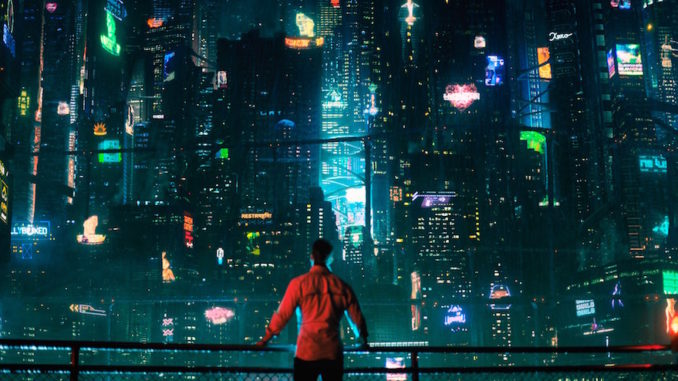
By Ray Freedman
Netflix’s most ambitious show to date, “Altered Carbon,” has a provocative premise. Based off the novel by Richard K. Morgan, it takes place 300 years in the future when technology offers the prospect of immortality — if you can afford it. The ultra-rich can purchase “stacks” (little discs your consciousness lives on), and the poor are unable to afford multiple “sleeves” (bodies). The story follows Takeshi Kovacs (Joel Kinnaman) who has had his consciousness stored in a hard drive (“digital prison”) for 250 years, and is essentially brought back to life in a new body to solve the murder of a powerful figure.
I was initially drawn to the show because of Miguel Sapochnik, the director of the pilot episode. Sapochnik directed the incredible “Battle of the Bastards” and “Hard Home” episodes of “Game of Thrones.” Fans of the HBO epic will know the caliber of those episodes, and how compelling, efficient and emotional the filmmaking is. Sapochnik served as an Executive Producer for the show as well, and his influence runs through the whole season. Pilot episodes must establish the world and ground characters with apparent ease to be successful, and the opening of “Altered Carbon” does nothing short of this. Sapochnik’s visual style is necessarily intimate for the expansive world as it intercuts expository dialogue with Takeshi’s emotional memories.
There are details of the world that would take a whole essay to explain, and that is part of what makes the show compelling. The attention given to the setting is something of a rarity in television these days, and it allows the characters to breathe it in. Being a Netflix production, the showrunners have the freedom to hide nothing; having 10 hour-long episodes allows for constant world-building so rich that it sometimes distracts from the plot. Takeshi must, after all, figure out this new messed up world as much as the murder he has been assigned to solve.
The tension in Takeshi’s character comes from his assignment. Takeshi was a member of a class of “envoys,” revered warriors who fought against the rising of the ultra-rich. As the last envoy, he is viewed as a historical artifact more than a person. Laurens Bancroft (James Purefoy), the man who brought Kovacs back, has declared him as his property. For these reasons, Kovacs hates the people who gave him his life back, but finds connection with a wide variety of characters who don’t live an immortal life.
The supporting characters are the heart of the show. They are a hurricane of personalities for the show to riff off of, played by brilliant actors who showcase a wide range of skill. Matt Biedel in particular steals the show, portraying multiple characters as his body is used as a sleeve for multiple individuals. Another highlight is Poe, played by Chris Conner, an artificial intelligence hologram who becomes an unlikely sidekick to Takeshi. The two are an amusing pair as they scheme and fight alongside each other. This array of characters gives the show a comic-book feel without taking away any seriousness.
Unfortunately, the show is not always able to keep up with its own scope. The world is so vast that the relationships feel uneven and rushed. It’s clear the writers struggled with certain characters, such as Detective Ortega (Martha Higareda), who takes a special interest in Kovacs’ investigation. The character just is not well developed and Ortega’s backstory feels misplaced, making the significance of her character unearned. Added to this, her dialogue is uninspired and lazy as it boxes Higareda’s fiery performance into a single, flat dimension.
Despite the occasional flaws in writing and pace, Takeshi’s perspective carries the story. His sardonic but neutral personality is played brilliantly by Joel Kinnaman. Takeshi Kovacs would like to not care about anything, making him a fitting protagonist given our increasingly nihilistic society. But, he quickly realizes he cannot. The show is ultimately a mixed bag that sets itself up for disappointment, but it is hard to turn off. The mysteries unpacked reveal a much more personal story than one would have expected, which makes “Altered Carbon” worth the binge.
Subscribe to the Mossy Log Newsletter
Stay up to date with the goings-on at Lewis & Clark! Get the top stories or your favorite section delivered to your inbox whenever we release a new issue.

Leave a Reply